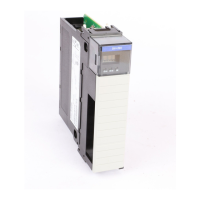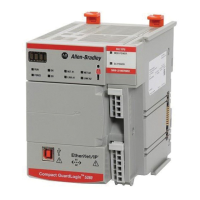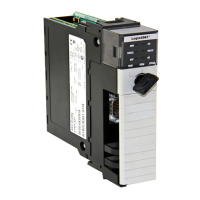1756-6.5.3 - December 1999
1-8 ControlNet Communication Basics
Actual Packet Interval (API)
The API is the actual update rate for a particular piece of data on the
network. ControlNet will set this rate equal to or faster than the RPI, based
upon the binary multiple of the NUT which is the next fastest rate at which
a module can send data. If this can not be done, ControlNet will provide
feedback that the configuration can not be supported.
Understanding the Effect of the NUT on the API
The following example illustrates how the NUT affects the API. A module
on the network can produce data only at binary multiples of the NUT to a
maximum of the NUT multiplied by 128. These multiples are referred to as
“rates” on ControlNet. Therefore, in the example of a NUT of 5 ms, the
module can send data at the following rates:
:
In our example, if you specify an RPI of 25ms, then the network produces
an API of 20ms, which is the next fastest rate at which the module can send
data. The module places the data on the network at every fourth network
update interval to produce the 20ms API. Similarly, if you specify an RPI of
150ms, the network produces an API of 80ms.
Rack Optimized and Direct Connections
A direct connection is a real-time data transfer link between the controller
and the device that occupies the slot that the configuration data references.
A rack optimized connection is a grouping of data from more than one I/O
module into a single block of data sent over a single connection.
Rack optimized connections reduce the total number of connections needed
to transfer data when using many I/O modules in a system. The following
example illustrates the benefit of rack optimized connections.
With this
NUT
And this
multiple
The module can send
data at this rate
5ms 1 5 ms
2 10 ms
4 20 ms
8 40 ms
16 80 ms
32 160 ms
64 320 ms
128 640 ms

